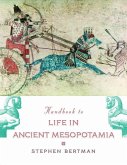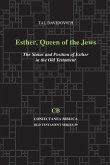This book began as a question I could not set aside: Why does hierarchy endure, even in societies that proclaim equality? In India, this question cannot be asked without entering the long and complicated history of varna and caste. I did not begin this project as an attempt to provide final answers. Rather, it was born out of conversations-with students who asked why the past still shapes their futures, with colleagues who debated the intersections of religion, law, and society, and with friends whose lived experiences carried truths deeper than any theory. These conversations reminded me that the story of varna is not abstract; it is intimate, lived, and present. This book is written with three intentions:To understand varna not only as an ancient concept but as a lived social reality that has shaped law, politics, education, gender, and economy across centuries. To situate varna within broader human questions about inequality, power, and dignity, so that its study is not confined to India alone but speaks to global debates about hierarchy. To imagine possibilities beyond varna-by listening to voices of resistance, reinterpretation, and solidarity across generations. My approach has been deliberately interdisciplinary: drawing on history, philosophy, anthropology, political science, and literature. But beyond the disciplines, this book is rooted in a simple conviction: that scholarship must serve life, not the other way around. It is also, in some ways, a deeply personal journey. Like many in India, I grew up hearing stories of caste without fully grasping their weight. It was only through years of study and listening that I came to see how profoundly varna shapes not only institutions but the invisible fabric of daily life-friendships, opportunities, silences. Writing this book has been both a reckoning and a responsibility. If these chapters succeed, it is not because they present a perfect account, but because they open space for reflection and dialogue. The questions of varna-about belonging, justice, and equality-are not India's alone. They are the world's. I invite you, the reader, not to take this book as a closed text but as a companion on a journey-sometimes historical, sometimes philosophical, often unsettling, but always guided by the hope that understanding can lead to transformation.
Bitte wählen Sie Ihr Anliegen aus.
Rechnungen
Retourenschein anfordern
Bestellstatus
Storno








